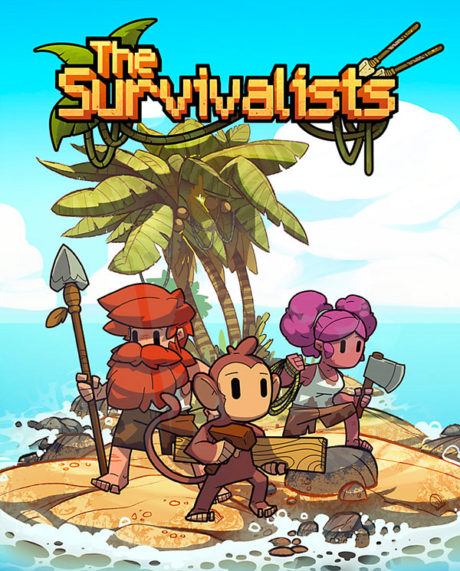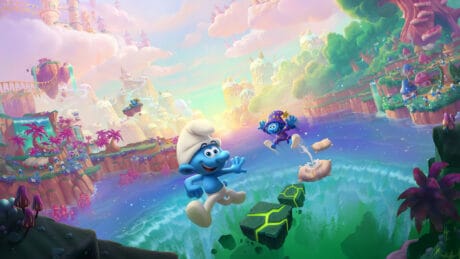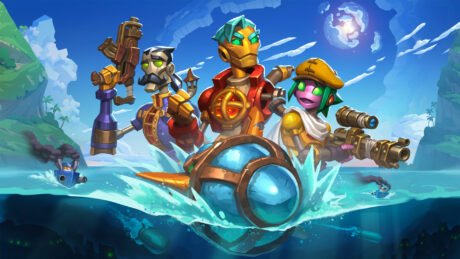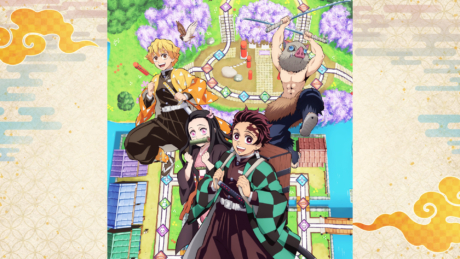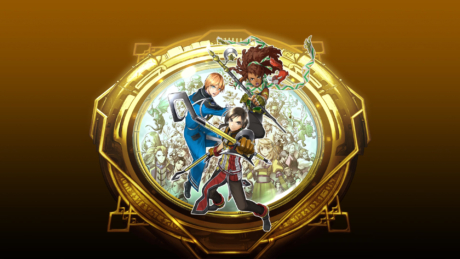Purrr....
- Gameplay freedom
- Monkeys!
- Uniqueness of islands
Hisss!
- Tedious tasks
- Rapid day/night cycles
- Inventory management
- Lack of local co-op
- No cross-platform play
Platform
Switch, PlayStation 4, Xbox One, PC, iOSPublisher
Team17Developer
Team17Genre
Action, Adventure, Multiplayer, Strategy/TacticsPlayers
1-4File Size (Minimum)
964 MBRelease Date (NA)
Oct 9, 2020Filed Under
Team17 is a veteran studio that has been making games for 30 years. They’ve developed a large number of games, with several in the couch co-op/online co-op arena (e.g., the Overcooked series and Moving Out). Their latest is The Survivalists, a survival-based, sandbox/building world with the goal of escaping the island. It was released in October 2020 for several platforms, including PC, PS4, Xbox One, and Nintendo Switch. There is even a plan for releasing the game on Apple Arcade, as well to make it available on mobile devices. However you decide to play, the game offers plenty with which to monkey around.
Castaway But Not Alone
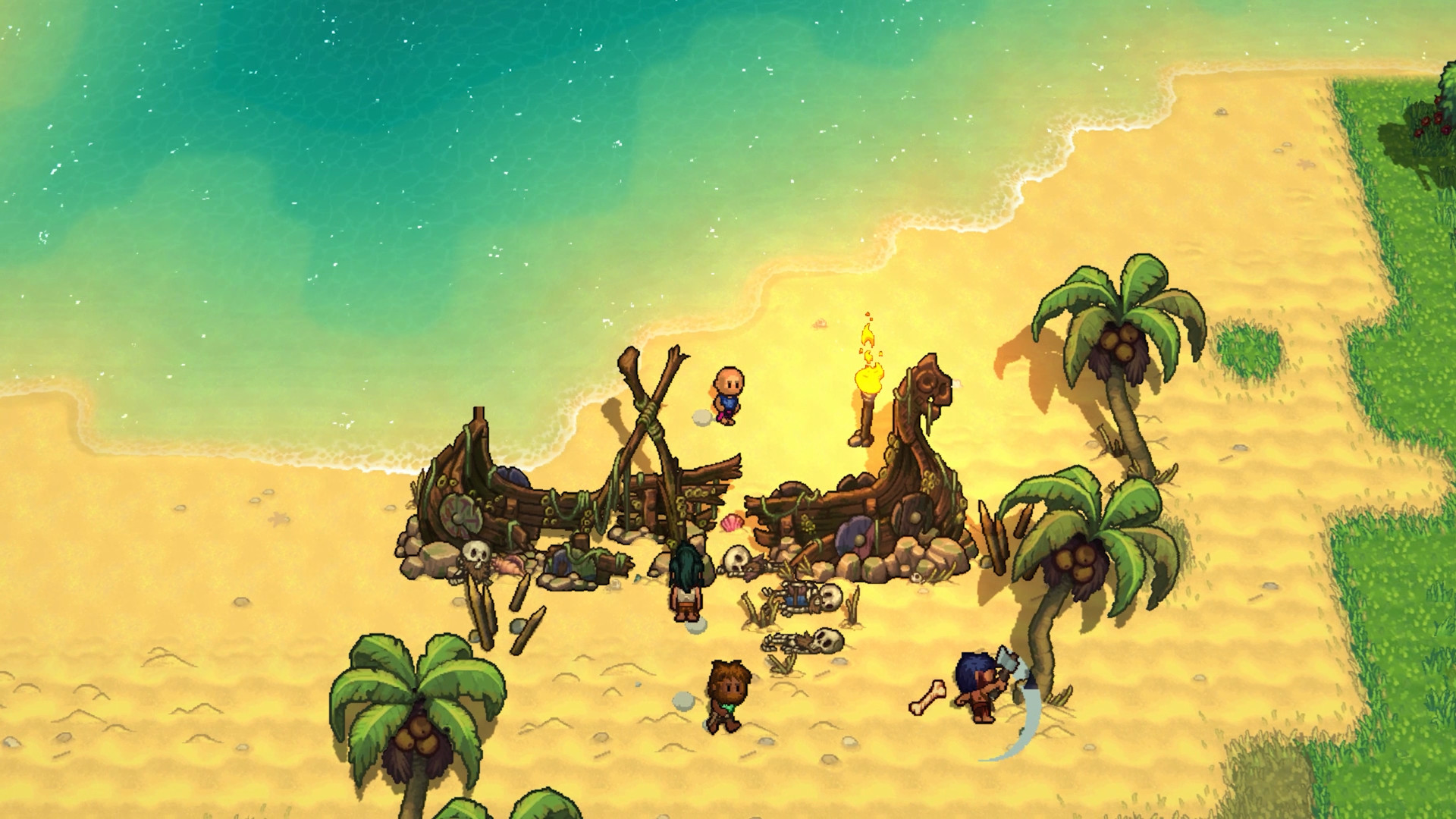
The main character is washed ashore next to a wrecked raft on an island which becomes your new home. Each island is a unique biome which is generated based upon a series of rules at the start of the game. The island cycles through day and night on a frequent basis, and resources throughout the island regularly regenerate as well. Upon the island, the character is faced with a series of challenges to survival, including animals to be hunted and other enemies who will hunt the character.
You will have to utilize the resources around the island to create tools, food, and structures to survive. Exploring the island’s wilderness reveals dungeons and special resources to help in your plight. During certain limited times, there is even a merchant who visits the island and sells items you can buy with in-game currency called doubloons.
Along the journey, there is also the opportunity to befriend monkeys to help with manual labor as well as other stranded characters through online play. Your character’s goal in surviving is to collect a series of special items that will allow you to escape the island.
Survival of the Fittest
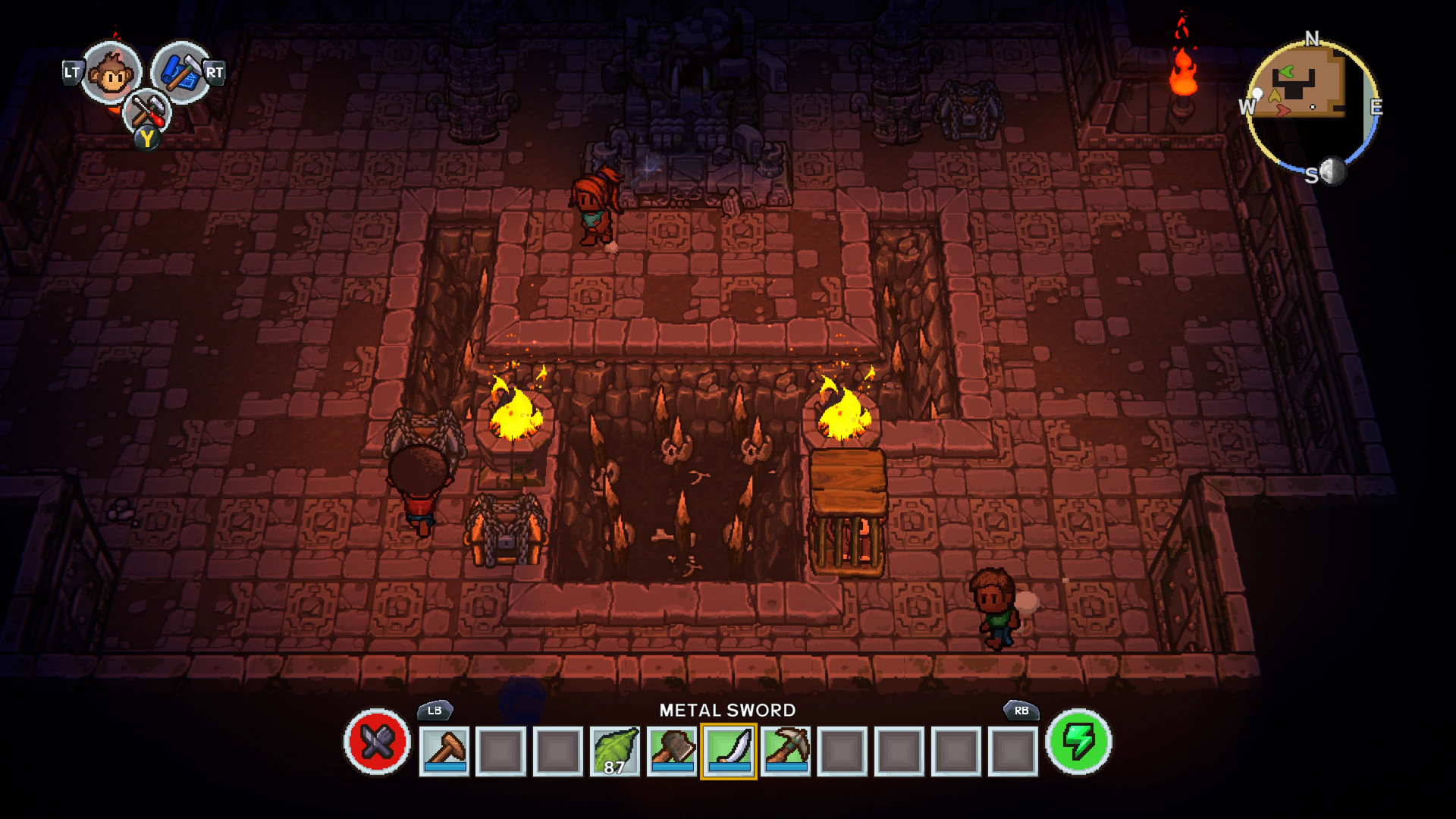
The gameplay allows you free reign to explore and build with very few restrictions. If you become bored with the character’s initial island, other islands can be explored with the aid of a crafted raft with a sail. Because time is constantly flowing, the character will need to manage it wisely to ensure survival. If enabled at the start of the island spawn, there are countless tips and advice provided at different points that are incredibly helpful to sharpening your survival skills.
Crafting is a key component to ensure that the character has the food, tools, weapons, and structures needed to survive. Your character will need to ingest food on a regular basis. Otherwise, they’ll go hungry (indicated by a red heart) or run out of health points (indicated by a red circle around the heart) if attacked. There is also a stamina indicator (indicated by a green lightning bolt), which is depleted when performing special actions such as running, rolling, or attacking. The stamina recovers fairly quickly, allowing you to continue performing actions.
Fortunately, the game is relatively forgiving if your character is laid low. Upon defeat, your character will wake up in their bed missing the items they were using when they fell. These items can be recovered once the character reaches the area where they were defeated.
Collect and Craft
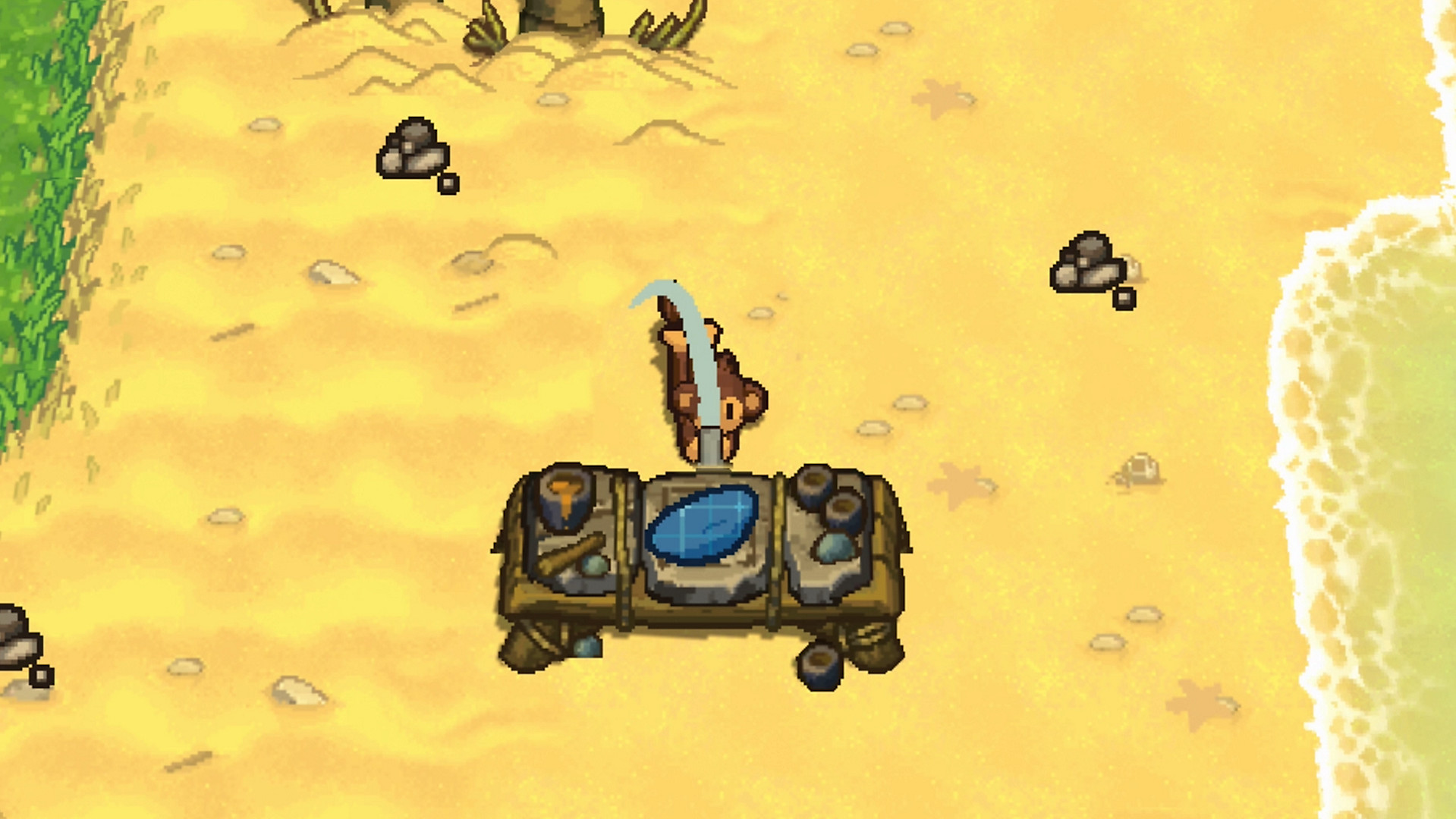
From the moment you are washed ashore, resource collection becomes an obvious and important component. Resources can be obtained by chopping down trees and bushes, breaking rocks, and searching chests, corpses, and special objects like a broken down jeep. These resources are utilized to craft various items from rope to walls to spears. Upon crafting a new item for the first time, it may unlock a new recipe for better or different items to help with survival. Certain items require crafting a precursor resource that will help in crafting the next item, such as crafting straw bundles from long grass, which can then be used to craft straw walls.
The crafting recipes that can be unlocked fall into three areas: food (meat kebab or stewed berries), blueprints (beds, walls, a raft), and crafting (tools like axes or crafting tools, and key resources for crafting like rope or straw). Blueprint crafting generates a hollow blue structure/item that can be placed in the desired location, which then needs required resources added, along with a crafting tool, to begin creating the structure/item.
The character is only able to craft limited basic tools and resources on demand. However, upon interacting with a crafting bench, the recipe options expand to include better tools and weapons. The crafting bench also allows you to craft up to 20 items back to back, and later, monkeys are available to help in the crafting process. Still, despite the availability of monkeys to help in crafting, the process requires a considerable number of button prompts and becomes a chore.
With collection and crafting, the painful realization of inventory management sets in for the user. The character is only able to carry a maximum of ten of each item at a time, which can be dropped if favor of a different item. Unfortunately, the character’s inventory fills up incredibly fast and requires off-loading into a craftable storage chest. There are various storage chests that can be unlocked as the game progresses, such as a medium storage chest that is itself an upgrade size-wise from the small chest. If caught exploring with a full inventory, you may have to venture back to your village to stash items.
Another feature available to help with storage is the ability to carry these storage chests where the character goes. This feature becomes quite helpful when the character befriends monkeys to carry the chest for them. As the game progresses, it becomes harder to organize storage, and constantly picking up resources and items requires endless button mashing.
Tools to Survive
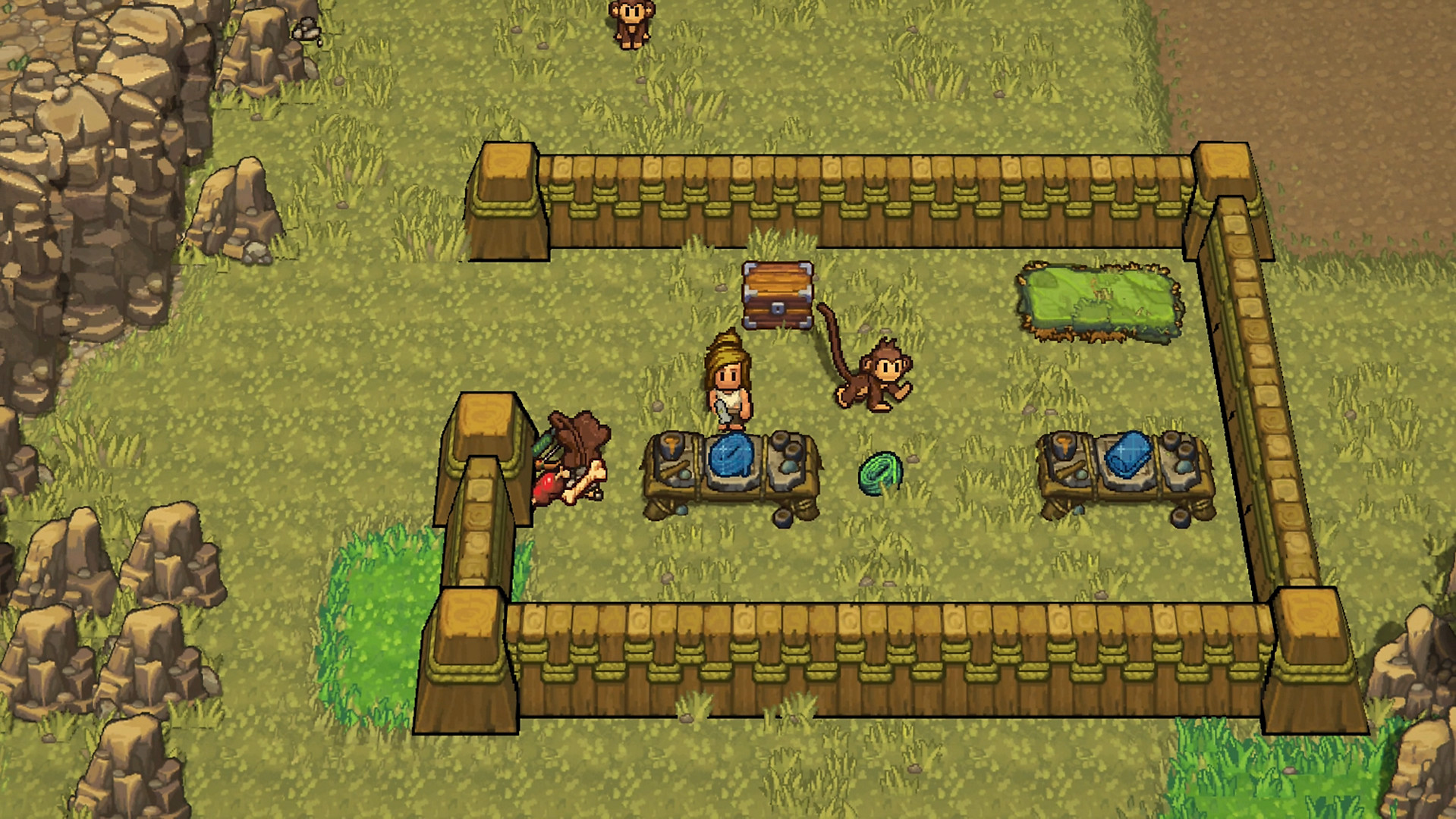
Another key element to the game is crafting tools and weapons, each of which serve a different purpose. The bread-and-butter of the crafting process requires a small chisel-like tool called the flimsy multi-tool. The flimsy multi-tool and other tools and weapons through the game have limited durability, shown by a diminishing green bar until it breaks. As the game progresses, more durable tools and weapons can be crafted, but they generally require less common resources. While many items serve multiple purposes, it may be more efficient to use a cheaper tool like an axe to break up rocks or chop down trees versus a wooden club. On the flip side, a wooden club will help the character defeat animals and enemies, whereas the axe or multi-tool has no purpose in attacking.
Weapons come in a variety of forms ranging from spears, clubs, and bow and arrows to help defeat animals and enemies found in the islands’ wilderness. While any weapon can be used to defeat foes, each weapon has subtle advantages and disadvantages. For example, a club has a wide impact area great for close-range combat, while the spear has a narrow impact range but a farther reach. Spears are useful in collection of fish as well.
Constantly Hungry and Fatigued
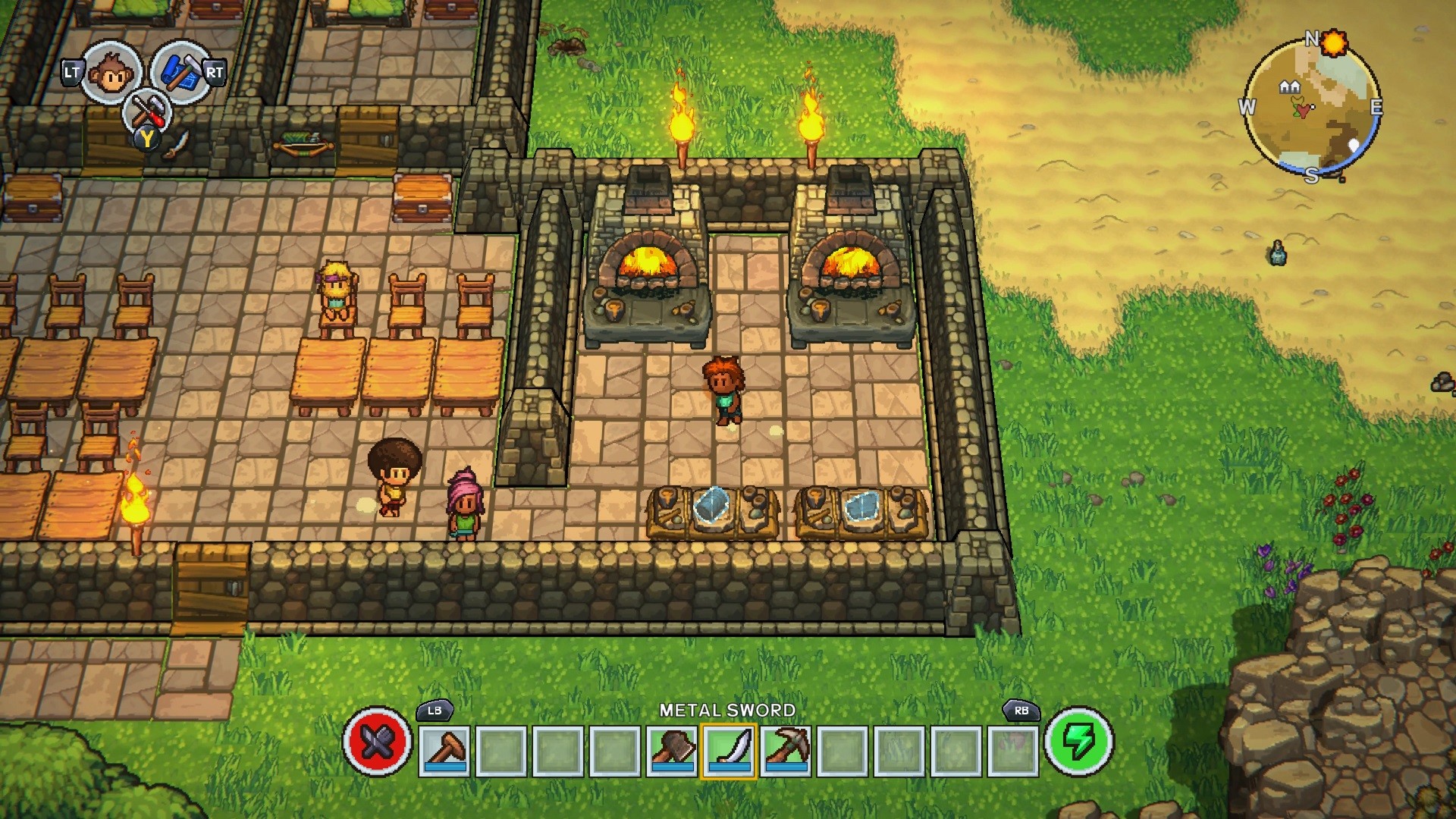
Within ten minutes of starting the game, hunger sets in for your character, as indicated by the inside of the red heart, and the game prompts you to eat to avoid starvation. Early on, this is easily achievable by eating a few berries. However, later in the game, food resource management becomes tedious due to the amount of effort needed to gather something to eat. Even if you’re standing still, you’ll get hungrier as time goes on, and the day and night cycles go by pretty fast. While having to eat food seems like a harmless feature, it creates a more aggressive pace in which you need to play the game due to how quickly hunger sets in and the amount of work required to get food.
Stamina is less of a concern versus hunger. However, during dungeons or raids, it becomes noticeable, since the character needs to repeatedly attack and roll-dodge enemies to stay alive. The stamina limits appear to be more balanced for gameplay versus hunger, as it forces more strategy into the rate and accuracy of your attacks over simple button mashing. Thankfully, you’re not always alone.
Monkey Mania
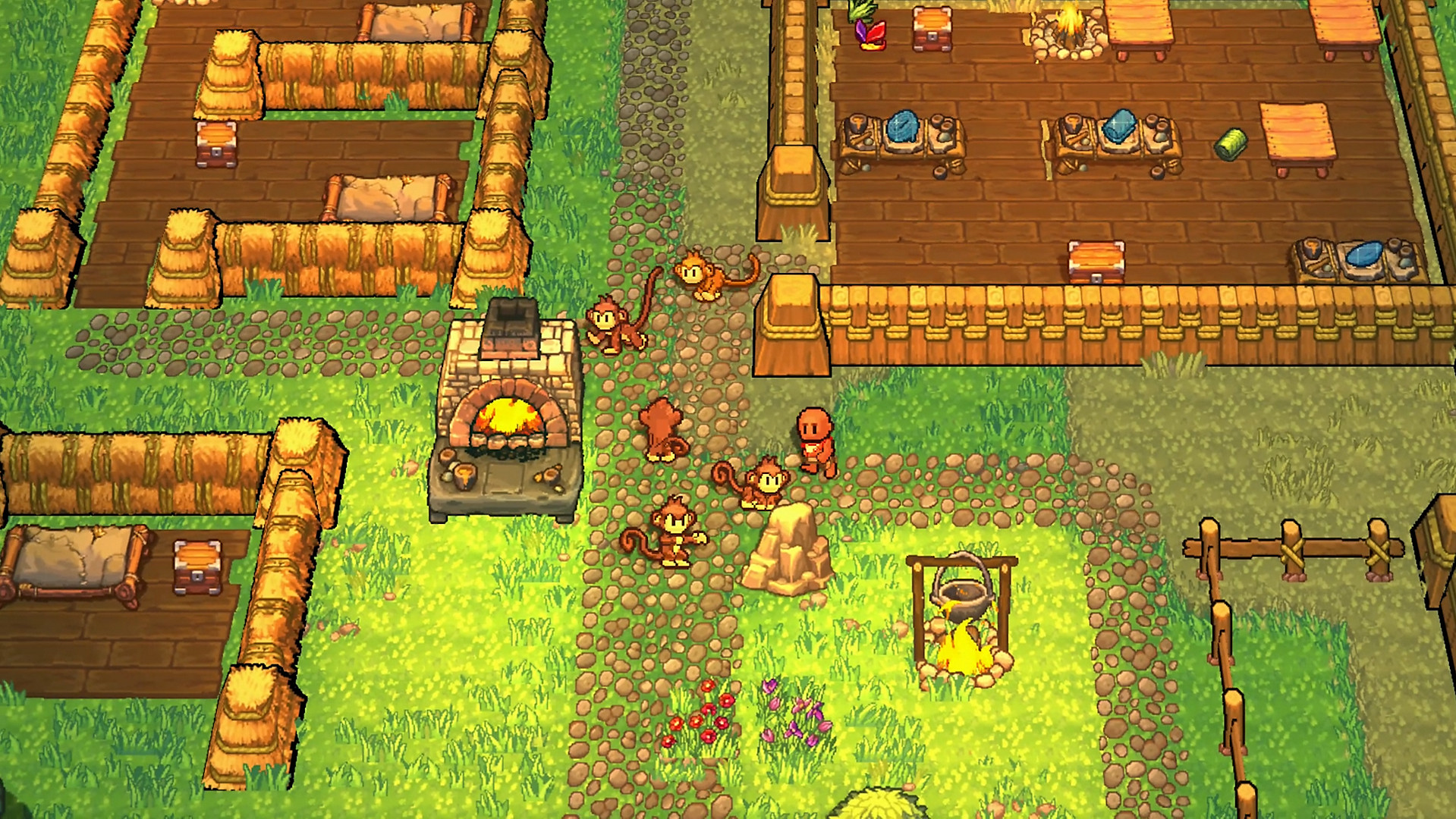
One of the more unique elements to the game is the availability of a monkey workforce. Each monkey is assigned a fixed name. However, the game allows you to adjust their color to make them easier to tell apart. The monkeys have a versatile role in helping your character with crafting, resource collection, fighting, and even carrying storage chests.
Unfortunately, the learning curve with managing the controls and assigning tasks is steep. If hints are enabled, the game will provide valuable advice on controlling the monkeys. Essentially, you select the monkey, perform the task you want them to emulate, and then they’ll be able to mimic it. Additionally, the proper tool for the task has to be given to the monkey as well.
Having the monkeys perform certain tasks and making sure they have the resources they need to be efficient can be overwhelming and tedious. Many times, it may be easier to perform a task yourself instead of assigning it to a monkey, due to the controls involved with teaching the monkey the task and providing it with a tool. Certain roles seem better suited for monkeys, such as carrying the storage chest as they follow your character or fighting a foe that gets too close to you. Crafting tends to be the more challenging task to efficiently assign to monkeys, since different recipes and resources are being used each time. Overall, the inclusion of monkeys helps with the gameplay, but the system lacks efficient user controls.
Dungeons and Danger
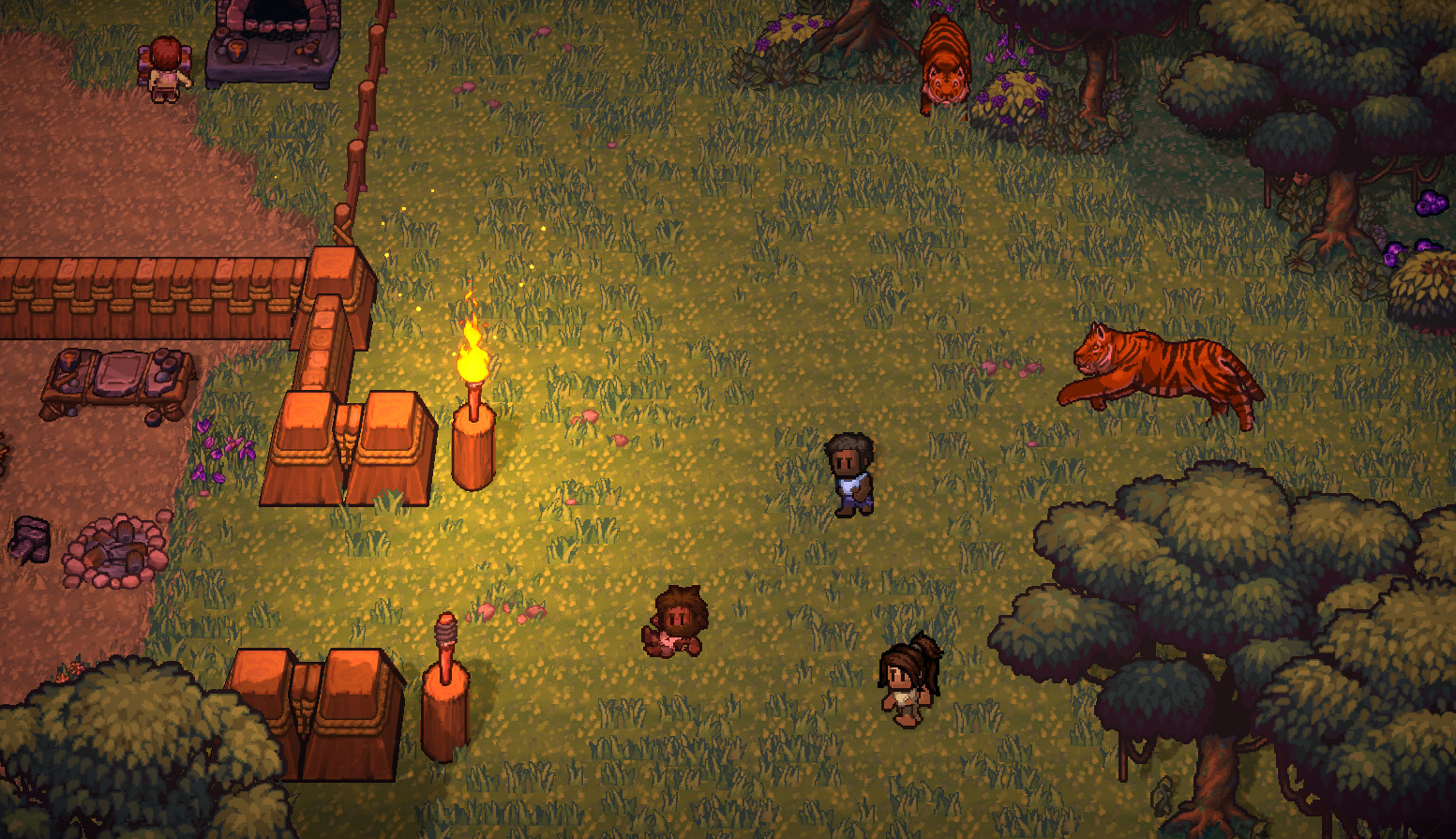
Island life is full of dangers, mostly from the various enemies and animals that will try to harm you. Certain animals like rabbits and rodents are harmless and can be trapped for fur and meat. However, during the night, animals such as bats come out and attack. Defeating these animals and enemies requires the use of a weapon such as a club, spear, or bow and arrows.
There are also small villages hidden in the wilderness with troll-like enemies you can attack. After defeating these enemy tribes, you may find a treasure chest that needs to be forcefully opened, or totem poles requesting a crafting item in exchange for a special item.
Occasionally, raids occur during the day or night, where enemies land upon the shore and attack your character, the monkeys, and any of your structures. Given your limited stamina and the number of enemies, you will need to eat food or allow stamina to regenerate naturally to defeat them all. Afterward, you may need to rebuild your bed, walls, and other village structures.
Each island also has dungeons, caves, and relics that will net the character some higher level tools and special items to aid in escaping the island. The dungeons consist of a series of rooms containing enemies that you must defeat, such as green trolls or a skeleton with a glowing green skull. At the end of the labyrinth are treasure chests that may contain special items (high-level weapons like a bone club, tools with higher durability, rare resources like hinges or a gold ingot) and a unique, grand crafting table for rare weapons, which require the use of rare resources.
Stranded With Friends
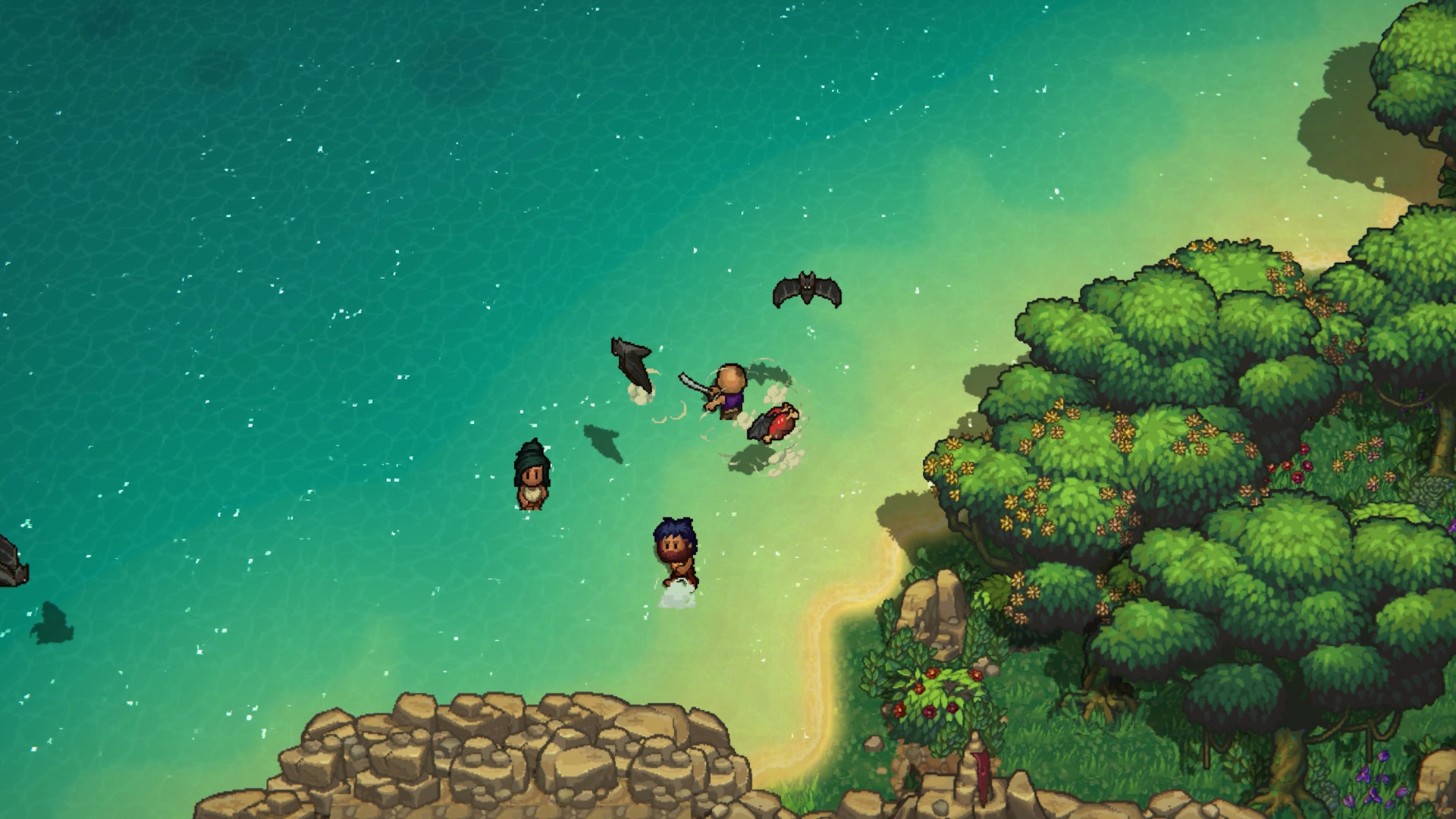
After a few hours of playing, you’ll notice that having other characters on the same island together would be beneficial to survival. Unfortunately, the game does not support local co-op play, nor does it support cross-platform play.
It does feature hosting and joining other characters online for multiplayer activity. Games can be labeled to ensure common goals between players, such as treasure hunting, hunting, or anything. The host is able to set the rules of the co-survival game, like limiting the ability to build and to interact with the host island’s monkeys. When joining a hosted game, you are able to bring up to five of your own monkeys to help out. Additionally, each player is allowed one chest to store their loot, which is accessible on their own island after the session has concluded.
Island Sights and Sounds
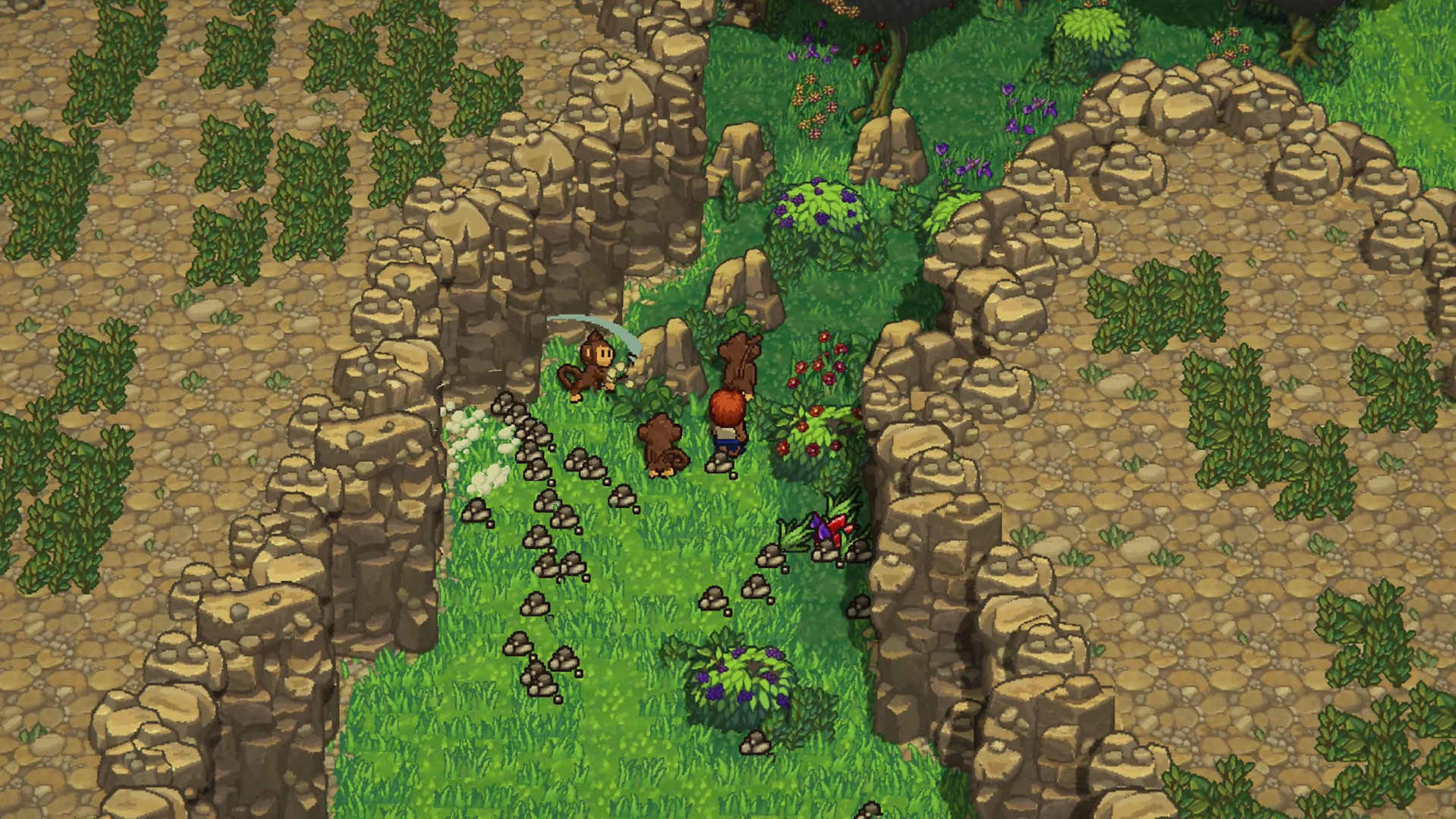
The 16-bit, 2D graphics are very smooth and simplistic. They’re nothing to write home about, but they fit for this style of gameplay, allowing for an easy viewing of activities. The screen can get a touch busy during raids, with monkeys and enemies all in one area, but that represents a small portion of the game. Similarly, during exploration, it can be difficult to see the character under the tree cover, but you can resolve that by chopping down a few trees or bushes. When it comes to menus and pop-up informational boxes, the text is easy to read, and navigation is straightforward.
Music throughout the game is provided by synthesizers, with a touch of sound effects, like an island breeze, waves crashing onto the shore, and animal noises, that would be expected on an island. Most of the game has relaxing, mysterious synthesizer tunes, though certain portions carry more intense music, like rhythmic drums when battling enemies in a village. The music and sound effects shift based upon time of day, location on the island (e.g., being in a cave or near the beach), and presence of enemies nearby. Sound effects add to the depth of the music to give some variety to the 8-bit style soundtrack. Both the sound effects and the music can be adjusted in the settings to suit one’s taste. In short, the music and sounds help give that feel of being isolated on an island.
Surviving the Island Chores
Overall, The Survivalists offers potentially limitless gameplay due to the uniqueness of the island biomes, the exploration, and the incorporation of multiplayer functionality. A few aspects, such as the constant hunger, the tedious and repetitive tasks, and a lack of local co-op or cross-platform play may irk more casual players who are looking to escape chores in the real world, though. Still, there is much fun to be had here, and besides, who doesn’t want a legion of monkeys serving them?
